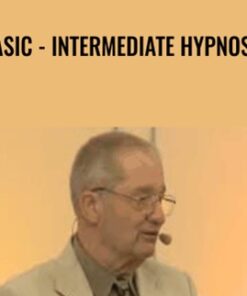Post-Op Emergencies
Question and Answer
What is operative complications?
operative complications is Post- can be fatal if not recognized and treated rapidly..
How does operative complications can be?
Post-operative complications can be fatal if not recognized and treated rapidly.
What is Complications?
Complications is can lead to extended hospital stays, increased cost, and diminished quality of life..
How does Complications can lead?
Complications can lead to extended hospital stays, increased cost, and diminished quality of life.
What is you?
you is If care for patients who have received sedation, anesthesia and analgesia in the operative, interventional or diagnostic setting, this seminar is for you..
How does you care?
If you care for patients who have received sedation, anesthesia and analgesia in the operative, interventional or diagnostic setting, this seminar is for you.
What is Post-Op Emergencies courses?
Post-Op Emergencies courses is Purchase at here with PRICE $500 $34 Confidently respond to the respiratory and cardiovascular emergencies that occur after surgery Take away essential post-op assessment strategies to identify early concerns How can the medications used during surgical cases present challenges afterwards when the patients admit to the floor?.
How does Post-Op Emergencies courses Purchase?
Purchase Post-Op Emergencies courses at here with PRICE $500 $34 Confidently respond to the respiratory and cardiovascular emergencies that occur after surgery Take away essential post-op assessment strategies to identify early concerns How can the medications used during surgical cases present challenges afterwards when the patients admit to the floor?
What is Emergent interventions?
Emergent interventions is for patients with known or unknown sleep apnea Documentation strategies for the crisis post-op patient situations Anticipate the unique needs for your Obese, Pediatrics, Geriatrics & Obstetrics patients Post-operative complications can be fatal if not recognized and treated rapidly..
How does Emergent interventions can be?
Emergent interventions for patients with known or unknown sleep apnea Documentation strategies for the crisis post-op patient situations Anticipate the unique needs for your Obese, Pediatrics, Geriatrics & Obstetrics patients Post-operative complications can be fatal if not recognized and treated rapidly.
What is Complications?
Complications is can lead to extended hospital stays, increased cost, and diminished quality of life..
How does Complications can lead?
Complications can lead to extended hospital stays, increased cost, and diminished quality of life.
What is you?
you is If care for patients who have received sedation, anesthesia and analgesia in the operative, interventional or diagnostic setting, this seminar is for you..
How does you care?
If you care for patients who have received sedation, anesthesia and analgesia in the operative, interventional or diagnostic setting, this seminar is for you.
What is case studies?
case studies is Utilizing and the latest evidence-based practice guidelines, Michael Greco, DNP, CRNA, CPAN, CAPA, will sharpen your understanding of the factors associated with post-operative risk..
How does case studies Utilizing?
Utilizing case studies and the latest evidence-based practice guidelines, Michael Greco, DNP, CRNA, CPAN, CAPA, will sharpen your understanding of the factors associated with post-operative risk.
What is Many post-operative complications,?
Many post-operative complications, is including potentially-fatal malignant hyperthermia, can occur in the immediate post-operative period..
How does Many post-operative complications, including potentially-?
Many post-operative complications, including potentially-fatal malignant hyperthermia, can occur in the immediate post-operative period.
What is other potential complications?
other potential complications is While may present a little later into the follow-up care provided..
How does other potential complications may present?
While other potential complications may present a little later into the follow-up care provided.
What is this seminar?
this seminar is Plan on attending and learn the many components needed to adequately evaluate patients following surgery, including: current (sometimes subtle) assessment findings that could flag something more significant, increased patient safety considerations, and strategies to prevent crisis situations from even happening..
How does this seminar Plan?
Plan on attending this seminar and learn the many components needed to adequately evaluate patients following surgery, including: current (sometimes subtle) assessment findings that could flag something more significant, increased patient safety considerations, and strategies to prevent crisis situations from even happening.
What is response?
response is Develop plans for the most likely respiratory and cardiovascular emergencies to occur post-operatively..
How does response Develop?
Develop response plans for the most likely respiratory and cardiovascular emergencies to occur post-operatively.
What is the regulatory issues and standards driving?
the regulatory issues and standards driving is Communicate changes in post-anesthesia practice today..
How does the regulatory issues and standards driving Communicate?
Communicate the regulatory issues and standards driving changes in post-anesthesia practice today.
What is strategies?
strategies is Assess to identify concerns early on in the patient following surgery..
How does strategies Assess?
Assess strategies to identify concerns early on in the patient following surgery.
What is the key elements?
the key elements is Evaluate involved in related malpractice cases..
How does the key elements Evaluate?
Evaluate the key elements involved in related malpractice cases.
What is the medications?
the medications is Appraise how used during surgical cases can present challenges afterwards when the patients admit to the floor..
How does the medications Appraise?
Appraise how the medications used during surgical cases can present challenges afterwards when the patients admit to the floor.
What is effective documentation?
effective documentation is Formulate samples for emergent post-op patient cases..
How does effective documentation Formulate?
Formulate effective documentation samples for emergent post-op patient cases.
What is certain populations?
certain populations is Analyze why pose unique challenges post-operatively to be able to anticipate needs..
How does certain populations Analyze?
Analyze why certain populations pose unique challenges post-operatively to be able to anticipate needs.
What is emergent interventions?
emergent interventions is Plan for for patients with known or unknown sleep apnea..
How does emergent interventions Plan?
Plan for emergent interventions for patients with known or unknown sleep apnea.
What is Critical Elements?
Critical Elements is in Perianesthesia Care Co-existing disease process and anesthesia Levels of sedation and advantages/ disadvantages (conscious sedation, MAC, general) Intubation techniques and equipment (standard versus emergency) Differentiating spinal and epidural blocks Safe management of catheters Emergency identification and management of complications Regional nerve blocks (Neck, upper and lower extremity, eyes) Identifying potential emergencies and complications resulting from regional blocks Horners syndrome Pneumothorax, vertebral artery injection Hematoma and intravascular injection Anesthetic Medication Complications Pharmacokinetics and pharmacodynamics Benzodiazepines Opioids Induction agents Inhalation agents and physiology Depolarizing and non-depolarizing muscle relaxants Acetylcholine receptor competitive antagonists Antiemetics Common emergency medications in the perianestheisa setting Post-operative Complications with Clinical Application (Real Life Case Studies) Modulation of pain Pharmacologic and non-pharmacologic methods to employ Physiologic complications from pain Local Anesthetic Systemic Toxicity (LAST) Signs and symptoms (early and late) Treatment algorithm Post-op Nausea and Vomiting (PONV): Risk factors, medication management, prophylaxis, rescue therapy Hypothermia: Heat loss physics, delayed awakening, warming interventions Perform a focused yet thorough physical assessment (systems review) Respiratory Emergent Complications (Real Life Case Studies) Airway obstruction: Upper and lower Pharyngeal muscular weakness Laryngospasm vocal cord paralysis Airway edema Other airway emergencies: Postoperative cervical hematoma Foreign bodies Residual effects of anesthesia Pharmacologic reversal Compromised oxygen exchange Bronchospasms Non-cardiogenic pulmonary edema Hypoventilation and hypoxia Pulmonary embolism Pseudeocholinesterase deficiency Atelectasis Aspiration Pneumothorax Emergency tracheotomy Obstructive Sleep Apnea Airway Emergent Complications (Real Life Case Studies) Physiology of OSA Comorbidities of concern Diagnosis Planning for treatment Emergency interventions Effects on airway management and ventilation Implications for care across the perianesthesia setting Cardiovascular Emergent Complications (Real Life Case Studies) Pulmonary edema Fluid overload LV failure MV dysfunction Hypertension and hypotension Postoperative dysrhythmias Myocardial infarction Hypervolemia and hypervolemia Neuropsychiatric Emergent Complications (Real Life Case Studies) Emergence delirium/excitement Somnolence Visual disturbances Intraoperative awareness Malignant hyperthermia Post-operative Urinary Retention Concerns Risk factors to heighten awareness Evaluation and the latest in treatment High Risk Populations: Tips to Reduce Potential Complications Obese patients Pediatric patients Obstetric patients Geriatric patients Tag: Post-Op Emergencies - Dr. Michael Greco Review..
How does Critical Elements blocks?
Critical Elements in Perianesthesia Care Co-existing disease process and anesthesia Levels of sedation and advantages/ disadvantages (conscious sedation, MAC, general) Intubation techniques and equipment (standard versus emergency) Differentiating spinal and epidural blocks Safe management of catheters Emergency identification and management of complications Regional nerve blocks (Neck, upper and lower extremity, eyes) Identifying potential emergencies and complications resulting from regional blocks Horners syndrome Pneumothorax, vertebral artery injection Hematoma and intravascular injection Anesthetic Medication Complications Pharmacokinetics and pharmacodynamics Benzodiazepines Opioids Induction agents Inhalation agents and physiology Depolarizing and non-depolarizing muscle relaxants Acetylcholine receptor competitive antagonists Antiemetics Common emergency medications in the perianestheisa setting Post-operative Complications with Clinical Application (Real Life Case Studies) Modulation of pain Pharmacologic and non-pharmacologic methods to employ Physiologic complications from pain Local Anesthetic Systemic Toxicity (LAST) Signs and symptoms (early and late) Treatment algorithm Post-op Nausea and Vomiting (PONV): Risk factors, medication management, prophylaxis, rescue therapy Hypothermia: Heat loss physics, delayed awakening, warming interventions Perform a focused yet thorough physical assessment (systems review) Respiratory Emergent Complications (Real Life Case Studies) Airway obstruction: Upper and lower Pharyngeal muscular weakness Laryngospasm vocal cord paralysis Airway edema Other airway emergencies: Postoperative cervical hematoma Foreign bodies Residual effects of anesthesia Pharmacologic reversal Compromised oxygen exchange Bronchospasms Non-cardiogenic pulmonary edema Hypoventilation and hypoxia Pulmonary embolism Pseudeocholinesterase deficiency Atelectasis Aspiration Pneumothorax Emergency tracheotomy Obstructive Sleep Apnea Airway Emergent Complications (Real Life Case Studies) Physiology of OSA Comorbidities of concern Diagnosis Planning for treatment Emergency interventions Effects on airway management and ventilation Implications for care across the perianesthesia setting Cardiovascular Emergent Complications (Real Life Case Studies) Pulmonary edema Fluid overload LV failure MV dysfunction Hypertension and hypotension Postoperative dysrhythmias Myocardial infarction Hypervolemia and hypervolemia Neuropsychiatric Emergent Complications (Real Life Case Studies) Emergence delirium/excitement Somnolence Visual disturbances Intraoperative awareness Malignant hyperthermia Post-operative Urinary Retention Concerns Risk factors to heighten awareness Evaluation and the latest in treatment High Risk Populations: Tips to Reduce Potential Complications Obese patients Pediatric patients Obstetric patients Geriatric patients Tag: Post-Op Emergencies - Dr. Michael Greco Review.
What is Post-Op Emergencies courses?
Post-Op Emergencies courses is Purchase at here with PRICE $500 $34.
How does Post-Op Emergencies courses Purchase?
Purchase Post-Op Emergencies courses at here with PRICE $500 $34
 Penguin Live 2: Pocket Mentalism - Richard Osterlind
1 × $20.00
Penguin Live 2: Pocket Mentalism - Richard Osterlind
1 × $20.00 Code 2 Conversions - Chris Rocheleau
1 × $135.00
Code 2 Conversions - Chris Rocheleau
1 × $135.00 Legal Risks in Nursing Documentation – Use Extreme Caution When Skimming the Facts - Rosale Lobo
1 × $40.00
Legal Risks in Nursing Documentation – Use Extreme Caution When Skimming the Facts - Rosale Lobo
1 × $40.00 Effortless Optimal Weight & Health Program - Morry Zelcovitch
1 × $72.00
Effortless Optimal Weight & Health Program - Morry Zelcovitch
1 × $72.00 Managing Bedside Emergencies Online Course - Pam Collins & Cyndi Zarbano
1 × $85.00
Managing Bedside Emergencies Online Course - Pam Collins & Cyndi Zarbano
1 × $85.00 Advanced Arduino Boards and Tools
1 × $20.00
Advanced Arduino Boards and Tools
1 × $20.00 Medical Marketing Mastery 100k Local Marketing Business - Jeff Smith
1 × $72.00
Medical Marketing Mastery 100k Local Marketing Business - Jeff Smith
1 × $72.00 Sun Zhi Jun - Swimming Body Eight Trigram Palm Series of Cheng Style
1 × $61.00
Sun Zhi Jun - Swimming Body Eight Trigram Palm Series of Cheng Style
1 × $61.00 2-Day Certificate Course: Treating Trauma in Intimate Relationships - Healing the Trauma Legacy in Couples Therapy - Janina Fisher
1 × $124.00
2-Day Certificate Course: Treating Trauma in Intimate Relationships - Healing the Trauma Legacy in Couples Therapy - Janina Fisher
1 × $124.00 Basic - Intermediate Hypnosis - Gerald Kein
1 × $93.00
Basic - Intermediate Hypnosis - Gerald Kein
1 × $93.00 Ethical Principles in the Practice of Rhode Island Mental Health Professionals - Allan M. Tepper
1 × $84.00
Ethical Principles in the Practice of Rhode Island Mental Health Professionals - Allan M. Tepper
1 × $84.00 Advanced Killer Chicken Wings - Erik Paulson
1 × $34.90
Advanced Killer Chicken Wings - Erik Paulson
1 × $34.90 Activate Your Diamond Blueprint - Diamond Energy - Jacqueline Joy
1 × $37.00
Activate Your Diamond Blueprint - Diamond Energy - Jacqueline Joy
1 × $37.00 21 Day Meditation Experience Collection – Deepak Chopra, Oprah Winfrey
1 × $41.00
21 Day Meditation Experience Collection – Deepak Chopra, Oprah Winfrey
1 × $41.00 Keith Krance - Agency Domination Beta Coaching
1 × $62.00
Keith Krance - Agency Domination Beta Coaching
1 × $62.00 Opening the Golden Door of Sacred Geometry
1 × $79.00
Opening the Golden Door of Sacred Geometry
1 × $79.00 Anxiety and Depression Online Conference: Evidence-based treatments for powerful change - Jennifer L. Abel , Judy Belmont , Margaret Wehrenberg , Mary NurrieStearns & Reid Wilson
1 × $136.00
Anxiety and Depression Online Conference: Evidence-based treatments for powerful change - Jennifer L. Abel , Judy Belmont , Margaret Wehrenberg , Mary NurrieStearns & Reid Wilson
1 × $136.00 Advanced IASTM Practitioner Certification - Mike Stella
1 × $84.00
Advanced IASTM Practitioner Certification - Mike Stella
1 × $84.00 2010 Edition – Market Analysis [Software (WIN)] – Timing Solution Advanced
1 × $232.00
2010 Edition – Market Analysis [Software (WIN)] – Timing Solution Advanced
1 × $232.00 2-Day Training: EMDR Certificate Course: Rapid, Safe and Proven Skills and Techniques for Your Trauma Treatment Toolbox - Jennifer Sweeton
1 × $124.00
2-Day Training: EMDR Certificate Course: Rapid, Safe and Proven Skills and Techniques for Your Trauma Treatment Toolbox - Jennifer Sweeton
1 × $124.00 10 Best-Ever Anxiety Treatment Techniques - Margaret Wehrenberg
1 × $164.00
10 Best-Ever Anxiety Treatment Techniques - Margaret Wehrenberg
1 × $164.00 'Quantum' Chakra Clearing and Balancing Series - Jonette Crowley
1 × $52.00
'Quantum' Chakra Clearing and Balancing Series - Jonette Crowley
1 × $52.00 "Fix My Job" binaural mantra meditation for attracting work you love - Michael Davis Golzmane
1 × $17.00
"Fix My Job" binaural mantra meditation for attracting work you love - Michael Davis Golzmane
1 × $17.00 1 Hour SEO | Become a Technical Marketer
1 Hour SEO | Become a Technical Marketer
 10 Steps to Greater Confidence and Self-Esteem - Alexis Meads
10 Steps to Greater Confidence and Self-Esteem - Alexis Meads
 101 Practical Strategies for the Treatment of GAD, Panic, OCD, Social Anxiety Disorder, Phobias and Insomnia - Jennifer L. Abel
101 Practical Strategies for the Treatment of GAD, Panic, OCD, Social Anxiety Disorder, Phobias and Insomnia - Jennifer L. Abel
 12 Minute Stage Crazy - Body of a Rock Star
12 Minute Stage Crazy - Body of a Rock Star
 10 Brain-Based Strategies: Help Children Overcome Anxiety and Promote Resilience - Tina Payne Bryson
10 Brain-Based Strategies: Help Children Overcome Anxiety and Promote Resilience - Tina Payne Bryson